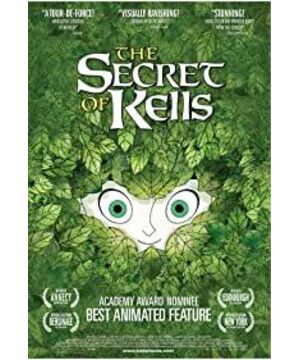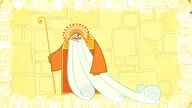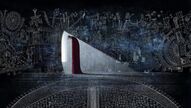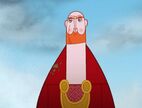Among these medieval manuscripts, the most elaborate and beautiful I think is the Book of Kells. Art History examination, we have to recite the label of its Chi-rho-iota page. I didn't watch this movie when I was studying, I only knew a bunch of blunt facts: Chi-rho-iota (XPI) page, folio 34 recto of the Book of Kells, probably from Iona, Scotland,or Kells, Ireland, late 8th or early 9th century. Tempera on vellum. This page is the beginning of the Gospel of Saint Matthew, about the nativity of Jesus. Chi-rho-iota (XPI) is the initial letter of Christ in Greek. These three letters take up almost the whole page, but there are actually two words autem (abbreviated to h) and generatio in the lower right corner, which means "Now this is how the birth of Christ came about". In addition to the fine and intricate patterns, there are other patterns on the page, such as the head of a curly-haired man ending in the middle letter rho, the two winged angels on Chi's left, and many animals appear.
The cross-like letter Chi symbolizes Jesus, and the two angels next to it guard the letter as if guarding Jesus himself. And the huge diamond in the middle of Chi symbolizes the universe with four sides. There are creatures in the air, on land, and in the sea on the pages. The fish is the symbol of the Eucharist ("multiple through fish and bread"), also alluding to Jesus. The cat is said to be a good friend of the monks in the monastery at that time, because it can catch mice-. -
This animation presents the origin and production process of this mysterious book through bold and reasonable imagination, and also provides the prototype of the mysterious curly hair. The cute white cat Peng Ge must also echo the cat in the page. The pattern of snakes intertwining and biting is also a feature of Hiberno-Saxon. From 72 minutes onwards, the vivid moving page pattern is shockingly beautiful. I love this kind of animation about previous works of art, and I'm particularly fascinated by medieval monasteries, especially after studying art history and reading The Name of the Rose by Eco. There is a mysterious beauty to everything in the Middle Ages.
View more about The Secret of Kells reviews











